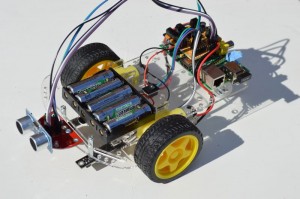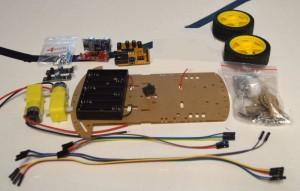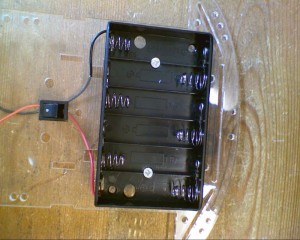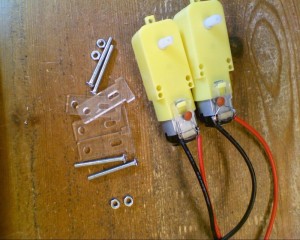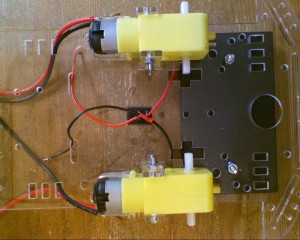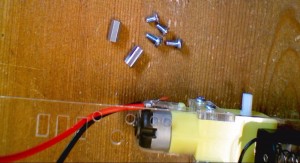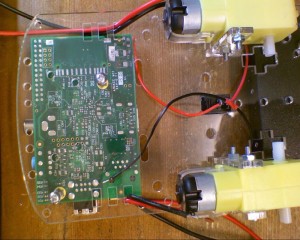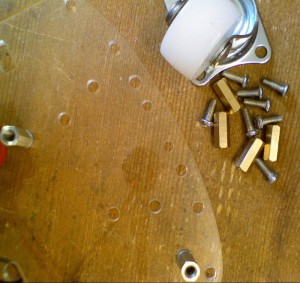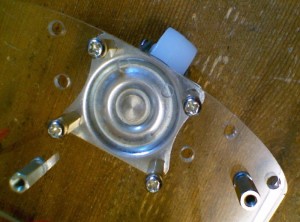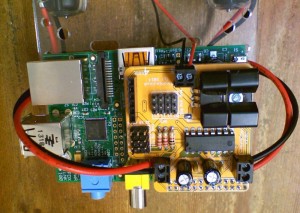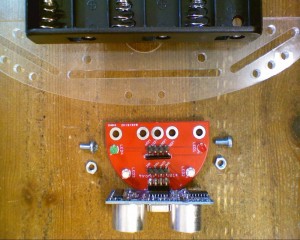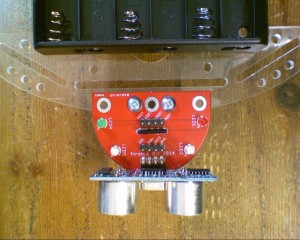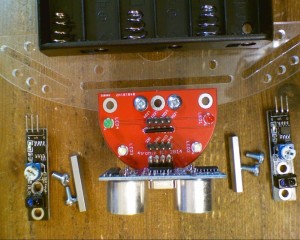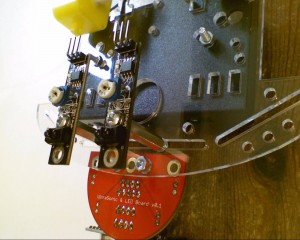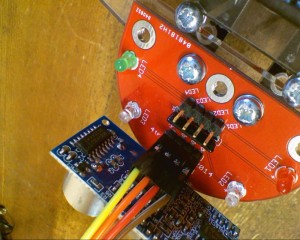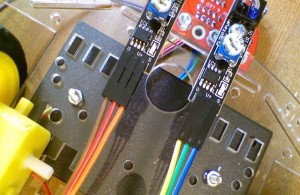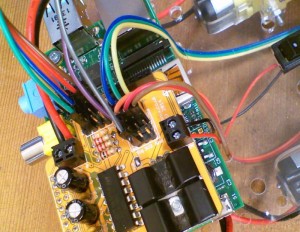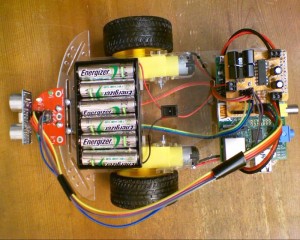Python Example Scripts
Please note that these programs are provided “as is” and without warranty purely for the purpose of demonstrating how you can write your own code for this robotic vehicle.
If you have our SD card with ready-installed demos, you will find these programs in home/pi/Pizazz/
If not then from a terminal window (eg. LXTerminal) type or cut&paste the following to install:
wget http://4tronix.co.uk/pizazz.sh -O pizazz.sh
bash pizazz.sh
- motorTest.py Tests the motors by moving Forwards, Reverse, SpinRight, SpinLeft, Pause in a loop. Press Ctrl-C to exit. This program will also light the LEDs to show the direction it is moving. Two LEDs at the front for Forwards, 2 LEDs at Left for Spin Left, etc
- ledTest.py Simply tests the LEDs by cycling LED1, then LED2, then LED3 then LED4 then back to LED1 again. Press Ctrl-C to stop
- sonarTest.py Prints the distance from the ultrasonic sensor to the nearest reflective obstacle. Repeats every second. Press Ctrlc-C to stop
- standardLF.py This is a standard Line Follower algorithm (thanks to Zachary Igielman). Place a black line (eg. electrical insulation tape) onto a reflective surface and the Pizazz will check if either sensor hits the line. If, say, the left sensor touches the line, then the Pizazz will spin left until the sensor is no longer on the line, then it will start moving again. You may need to adjust the separation of the sensors, and/or the speed of the robot to follow your specific line
- fuzzyLF.py This line follower is a bistable line follower. It is always (after it has found the line) either turning left or turning right. If it hits a line with the left sensor then it know it needs to turn left to find the line again, so it keeps moving left until the right sensor detects a line, then it starts moving right. This has the strange effect of the Pizazz wandering around close to the line, but not necessarily sitting directly over it. It does mean the that the speeds can be increased and it is easy to make the Pizazz go around a track twice as fast as with a standard line follower. You probably will need to move the line follower sensors much closer together than for the standard line follower program
ScratchGPIO Example Scripts
Please note that these programs are provided “as is” and without warranty purely for the purpose of demonstrating how you can write your own code for this robotic vehicle.
If you have our SD card with read-installed demos, you will find these scripts by doing a File / Open within Scratch and selecting the Pizazz folder
Many thanks to Simon Walters (@cymplecy) for all his excellent work on this

